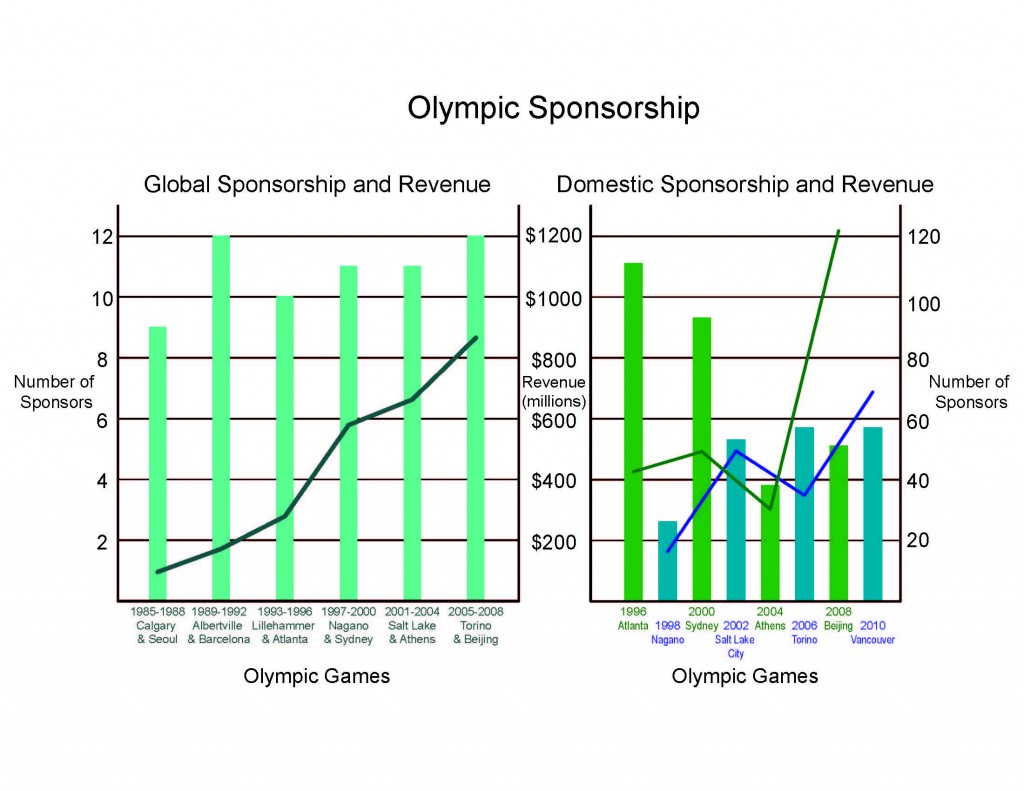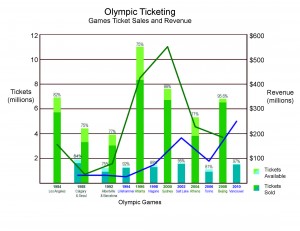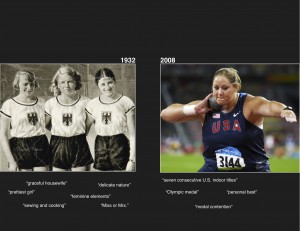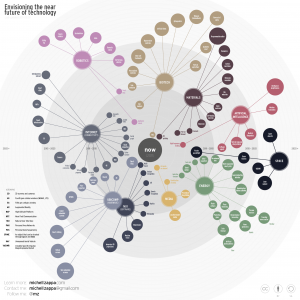The number of domestic sponsorships sold throughout the years very similarly to that of the ticketing. There again seems to be a correlation between the number of domestic sponsors and with the size of the hosting country, with the Atlanta games in the US having the highest number of domestic sponsorship. Unlike the ticketing revenue though, which dropped down less than Athens’s, the domestic sponsorship revenue spikes up for Beijing to $1,218 million, more than double Athens’ with less than half the number of sponsors than Athens.
The number of global sponsorships has stayed relatively the same with minor increases throughout the years. This is possibly due to the fact that only a select few companies can afford to pay the high global Olympic sponsorship fees in addition to being global enough to benefit for the advertising in all the countries the Olympics are held and broadcasted in. Even without the change in number of sponsors, the revenue from them has continually increased.
http://www.olympic.org/Documents/IOC_Marketing/OLYMPIC_MARKETING_FACT_FILE_2011.pdf



